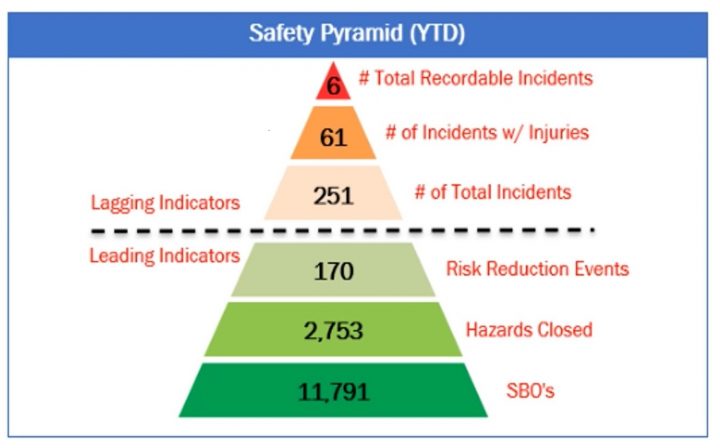Do you have an accurate pulse on how human factors affect your safety climate? Human factors are often overlooked when companies are solely focused on other things like standard operating procedures or compliance training, and it’s important to have a sense of their impact on worker safety.
Inattentional blindness happens when you’re so focused on one particular thing that you fail to notice other things going on around it. An example is the invisible gorilla test, which demonstrates that the deeper you concentrate on something, the less likely you are to notice oncoming hazards or unexpected events. If you focus all of your attention on one thing, there are a number of things that you’re bound to miss.
In a recent client success Lunch & Learn session with SafeStart, Wayne Denton, Director of Environmental Health and Safety at Outokumpu Stainless USA, LLC, outlined a real-world scenario involving inattentional blindness that most people can relate to:
One of the things that came to light was that we had too much focus on one number. Corporate sets a target every year for us to be under, last year it was to stay below 2.2, this year it’s 2.0. And that’s all we would talk about. What’s your TRIFR—you’re below target—you’re good to go—let’s move on. There was no focus on the people. So we had several things we wanted to talk about and wanted to implement. One suggestion I made was to not reinvent the wheel. Everybody was familiar with the safety triangle so we used that. Risk reduction events is a fancy term but basically, you take a standard operating procedure (SOP)—all of ours have a risk rating—so the SOP with the highest risk, you take that with a small team of people, review the SOP, and watch the task being performed, come back to a conference room and talk about the ways and ideas that could reduce or eliminate risk.
Even the highest-performing teams need to have a plan for safety. While the safety pyramid has had some criticism about the relationship between the upper and lower sections and the potential for inattentional blindness around serious injury and fatality prevention by focusing too much on the frequency of minor injuries, Wayne used this simple tool to highlight that their blind spot was on the lower categories. So, in addition to their primary focus on TRIFR, they also needed to focus on leading indicators and the human factors including employee actions.

But as Wayne recognized, the biggest downfall is not approaching employee actions correctly. Since humans are the ones performing the tasks that lead to injuries, a lot of the focus is put on the human error that caused the injuries. Focusing on error invites blame, when in fact the focus should be on positive communication. Communication needs to be effective and introducing a common language can help everyone be on the same page. When a near-miss is submitted, it’s important that it’s not ignored. Wayne went on to detail what was successful for Outokumpu:
One thing we implemented and actually maintained is what we refer to as the Green Card program. It’s a two-fold process—first, identify hazards. Something as simple as if I’m walking through the shop and there’s oil on the floor, I see it, clean it up, take care of it—so I’ve identified and eliminated the hazard right there. We ask people to document those incidents and turn them in, every month we pick the top five and give them a prize. So that’s on one side, on the left—we call it the green card or safety zone. That’s where you identify the hazard or unsafe condition and what you did to correct it if you could—sometimes it may take some engineering to correct or eliminate it. But since it’s two-fold, on the right-hand side is what we call our SBO, it’s the backside of the card. So safety behavioral observation, what was the unsafe act and what did you do to correct it.
As part of the SBO (Safety Behavioral Observation) portion of the card, Outokumpu included what SafeStart action was observed—when you had the conversation with a team member, were they rushing, frustrated, etc. Not only does this instill the common language among the employees and contractors, but it connects these two groups with the auditor and management as well. It’s the kind of positive communication employees need to continue, and it’s also a great reminder of the human factors that can affect people in any given situation.
Wayne is well-versed in human factors integration and has used a blended approach to safety management to help Outokumpu focus on achieving attention-getting results in their safety performance with a TRIR well below 1.0.
If you’d like to watch the full lunch-and-learn session that Wayne delivered to the SafeStart staff, you can check it out here: https://safestart.com/videos/wayne-denton

